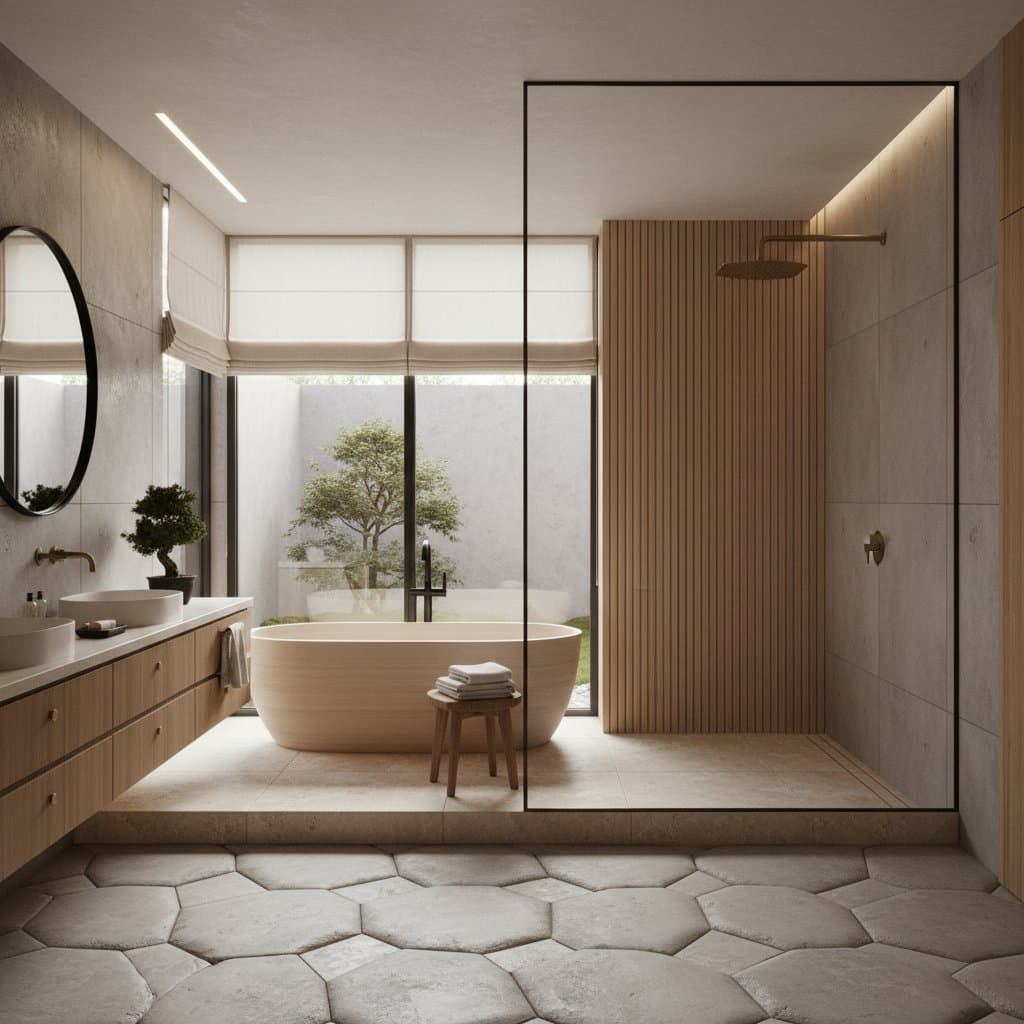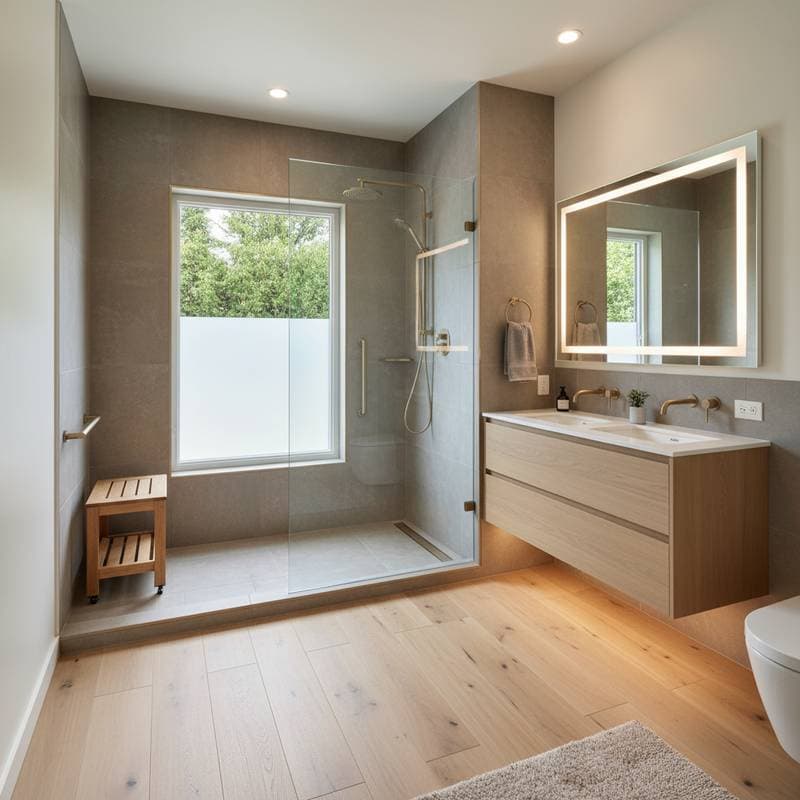3D-Printed Tiles Bring Custom Style to Bathrooms on a Budget
Have you ever stepped into a bathroom and felt it lacked personality, blending in with countless others sporting plain white subway tiles or generic ceramic squares? If you are planning a remodel and crave a space that reflects your unique taste, 3D-printed tiles could be the solution you need. This innovative option allows homeowners to break free from flat, repetitive designs and embrace textures and patterns that feel sculptural and bespoke, all without straining your finances. With thoughtful planning, these tiles can elevate your bathroom into a striking, personal retreat.
In this guide, we will explore what makes 3D-printed tiles stand out, how they are crafted, the costs involved, and practical ways to incorporate them into your bathroom design for maximum impact.
The Appeal of 3D-Printed Tiles for Homeowners
Bathrooms often top the list of home renovation projects, and the choice of tile significantly shapes the room's aesthetic and ambiance. Many seek a distinctive look without venturing into the high costs of luxury materials like imported marble. 3D-printed tiles bridge this gap by offering several compelling advantages:
- Distinctive design at a reasonable cost: While not the most budget-friendly choice, they often come in at a lower price than premium natural stone, yet deliver a comparable visual punch.
- Robust durability: Options in ceramic or porcelain withstand moisture, heat, and harsh cleaning agents with ease.
- Versatile applications: Use them sparingly as accents or boldly across entire walls, depending on your vision.
- Customizable orders: Unlike mass-produced alternatives, these tiles can be ordered in smaller, tailored batches to suit specific project needs.
This blend of affordability and individuality makes them a growing favorite among those looking to personalize their spaces.
Ideal Spots for 3D-Printed Tiles in Your Bathroom
You do not need to cover every inch of your bathroom with 3D-printed tiles to make a statement. Their impact is often strongest when applied with intention in key areas.
Striking Accent Walls
A feature wall behind a vanity or bathtub can transform the room, serving as a captivating focal point. This approach keeps material costs in check while delivering a bold design element.
Defined Shower Niches and Borders
For a subtler touch, consider using textured tiles in a narrow strip or as an inset within a shower niche. This adds visual intrigue without dominating the overall space.
Functional Flooring Choices
Certain 3D-printed tiles are suitable for floors, though caution is necessary with highly textured designs. Such surfaces might trap dirt or become slippery when wet, so prioritize options with anti-slip properties for safety.
Eye-Catching Backsplashes
Installing a 3D-printed backsplash offers a quick, impactful upgrade. It requires less material than full wall coverage, making it a cost-effective way to introduce texture and style.
Key Practical Factors to Consider
Before diving into a project with 3D-printed tiles, weigh these essential considerations to ensure a successful outcome.
Safety First
While textured tiles on walls pose little risk, floor applications demand scrutiny. Avoid designs with sharp edges or deep grooves that could harbor moisture and create hazards. Always confirm the slip resistance rating before installation.
Ease of Maintenance
Raised patterns can attract dust and soap residue more than smooth surfaces. Regular upkeep with a soft brush or sponge will maintain their appearance, but steer clear of abrasive tools that might scratch or dull the finish.
Compliance with Local Regulations
Most tile installations do not require permits, but if your remodel involves plumbing changes or structural modifications, check with local authorities. Adhering to building codes is crucial for safety and future resale value.
Adapting to Regional Conditions
In humid climates, opt for porcelain 3D-printed tiles over polymer alternatives, as they better resist moisture absorption. For colder areas, ensure floor tiles near exterior walls are rated for freeze-thaw cycles to prevent cracking.
Maximizing Your Investment
Bathroom renovations often boost property value, yet not all design choices yield the same return. Using 3D-printed tiles as targeted accents creates a lasting impression without inflating your budget excessively. Covering an entire bathroom in premium 3D-printed materials might captivate some buyers, but overly niche designs could limit appeal. A balanced strategy works best: pair these tiles with classic, neutral finishes elsewhere to maintain broad marketability while showcasing unique style.
Expert Advice for Flawless Results
- Focus on vertical surfaces like walls for easier upkeep, as floors with texture demand more frequent and careful cleaning.
- Balance bold 3D-printed tiles with understated companions to avoid a cluttered or overpowering look.
- Order an extra 10 to 15 percent of tiles to account for breakage during installation or future repairs.
- Partner with an installer experienced in handling textured tiles, as improper grouting can detract from the intended effect.
- Apply a sealant if advised by the manufacturer to protect against stains and prolong the tiles' pristine condition.
Bringing Your Vision to Life
If you are ready to craft a bathroom that stands out from the ordinary, 3D-printed tiles offer an exciting path forward. Begin with a modest application, such as a backsplash or a single accent strip, to test the waters before committing to larger areas. Their fusion of cutting-edge technology, artistic flair, and practical benefits positions them as a top trend in bathroom design. By defining your focal points, securing samples to evaluate in person, and consulting with a skilled installer, you will be well-equipped to create a space that embodies your personal style and endures over time.








